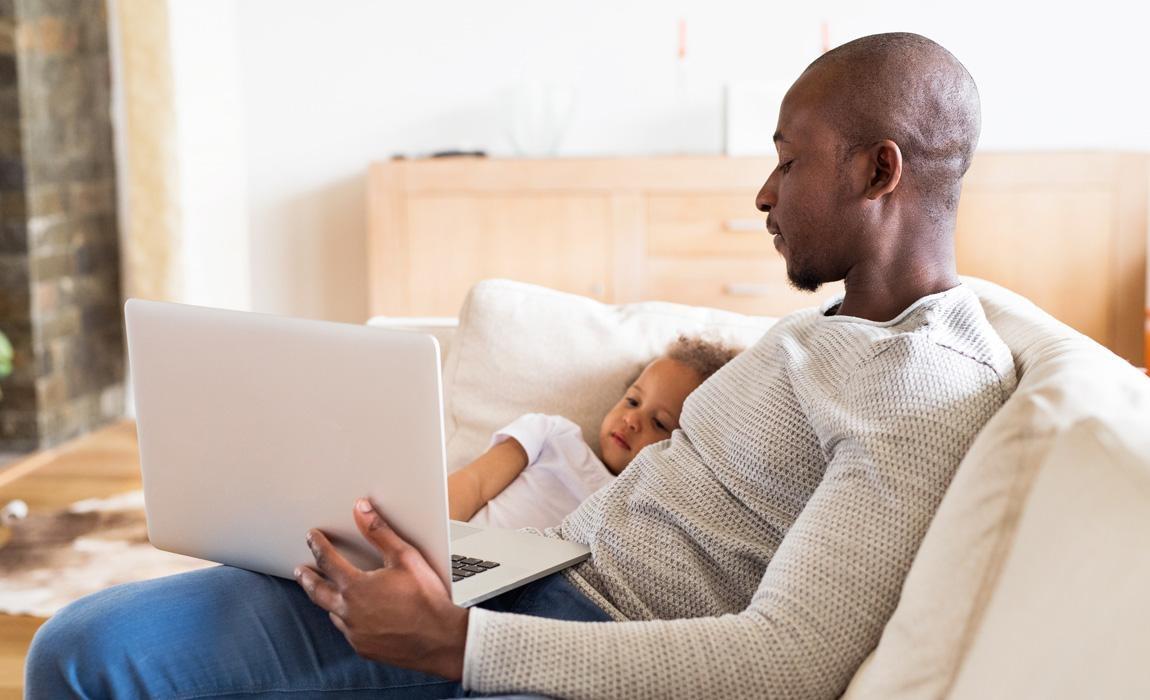The twice-yearly ritual of changing the clocks is upon us again! Every spring, we spring forward and fall back with the changing seasons. While it's a necessary part of life, adjusting to daylight savings time can be difficult for some people. There are several ways to make this transition easier on your physical and mental health. In this article, we'll explore how you can prepare yourself each season so that making the shift to daylight savings time isn't such a chore.
How Many Kids Do You Have?
- To make your family's transition to daylight savings time easier, gradually adjust bedtimes and wake times a week or two before the change, prioritize natural daylight exposure, and consider using smart lighting systems to simulate natural dawn.
- Men experience longer periods of deep REM sleep compared to women but can be more affected by sleep disruptions due to health issues and stress.
- Setting all clocks and digital devices ahead before bed helps reduce confusion and stress during the time change transition.
- Smart lighting systems like Philips Hue can create artificial sunrise effects to help ease the body's transition to earlier wake times.
- Parents should explain daylight savings time to children using age-appropriate language while gradually adjusting their sleep schedules to minimize disruption.
- Men & Boys: Why Sleep Patterns Matter
- Gradually Adjust Your Schedule
- Sleep Well Beforehand
- Set Your Clocks Before Bed
- Consider Using Smart Lights To Mimic Earlier Daylight
- Prioritize Daylight Exposure
- Effects Of Daylight Savings Time On Health
- Explaining The Daylight Savings Time Change To Kids
- Making the Most of Time Changes: Embracing Daylight Savings as a Family
If you are like most dads ... the last thing we need is more family chores!
The sudden change in sleep schedule disrupts our regular routine and leaves us feeling groggy or out of sorts for days afterward. Fortunately, there are steps you can take prior to the switchover which will help alleviate some of these effects. Taking proactive measures like preparing your body ahead of time by gradually shifting bedtimes and wake times throughout the week before Daylight Savings Time goes into effect can ease both your mind and body into the new clock setting.
Men & Boys: Why Sleep Patterns Matter
Sleep plays a vital role in male health and development across all life stages, yet its importance is often overlooked. Research shows that sleep patterns significantly influence physical health, emotional well-being, and cognitive performance in men and boys.
Males experience distinct sleep characteristics that set them apart. While their total sleep needs are similar to females, men typically enter deeper stages of REM sleep more quickly and spend more time in this restorative phase. However, they're also more vulnerable to certain sleep disruptions – men are twice as likely to develop sleep apnea and often report more fragmented sleep patterns, especially during times of stress.
The impact of poor sleep on male health is substantial. Insufficient or irregular sleep can lead to:
- Hormonal imbalances affecting testosterone production, which is crucial for muscle growth, bone density, and overall vitality
- Decreased cognitive performance, particularly affecting attention span and decision-making abilities at work or school
- Higher risk of mental health challenges, including increased irritability and vulnerability to depression
- Compromised athletic performance and slower physical recovery, especially relevant for active men and boys in sports
For growing boys, consistent sleep patterns are particularly crucial as they directly influence physical development, academic performance, and emotional regulation during critical developmental stages. Establishing healthy sleep routines early in life can set the foundation for better long-term health outcomes.
Men who suffer from sleep apnea can face even more challenges with getting good quality sleep.
Switching time zones by moving the clock forward an hour during warmer months can disrupt this pattern.
Gradually Adjust Your Schedule
Adjusting to daylight savings time is like easing into a cold pool rather than jumping in - the transition works best when done gradually. Start preparing a week before by shifting your bedtime and wake time forward by 15 minutes each day. Limit caffeine and plan daytime activities to help your body clock adapt naturally. By the time the official change arrives, your internal rhythm will already be synchronized with the new schedule, making for a smoother transition.
Sleep Well Beforehand
Quality sleep is crucial for an easier daylight savings transition. Practice good sleep hygiene by avoiding late-day caffeine, limiting screen time two hours before bed, and creating a restful environment. Regular exercise can help establish better sleep patterns, but avoid napping which might disrupt your nighttime rest. By building these healthy sleep habits before the time change, your body will be better prepared to adjust to the new schedule.
Set Your Clocks Before Bed
Sleep is essential for a healthy lifestyle, so it’s important to make sure you get enough of it during the transition to daylight savings time. A key way to do this is by setting your clocks before bed. This will help ensure that you have a night of adequate sleep and can adjust more easily when transitioning back into normal time.
Here are some tips on how to prepare your clocks for bedtime:
- Set all clocks at least an hour ahead the night before Daylight Saving Time begins.
- Adjust all digital clocks in the house as well as any other gadget with a clock setting, such as microwaves, ovens, or thermostats.
- Make sure all alarm clocks are set correctly if needed.
- Check outdoor lights and replace any bulbs that may be burnt out since DST takes effect around sunrise and sunset times.
By following these simple steps, you can be confident that you will successfully transition into Daylight Savings Time without disruption in your daily routine or missing out on restful sleep! Taking care to properly plan ahead and set your clocks accordingly helps alleviate stress associated with changing over from Standard Time to Daylight Savings Time.

Consider Using Smart Lights To Mimic Earlier Daylight
While we all enjoy the later sunsets since it gives us more time for summer BBQs and days at the beach, having to get up early - often before dawn - and get ready for work and school is a drag!
One trick that you should consider would be to add smart lighting systems such as Philips Hue to your home. Instead of alarm clocks waking you up rudely, they can be connected to your Google Home or Alexa home network and gradually turn sun-light-like bulbs on at the time you need to wake up. This will avoid the disruptive mid-REM cycle awakening that can ruin the rest of the day.
We like using Philips Hue light and since we began adding them to our smart home network, they've added a ton of innovative products. For instance, we us their standard color-changing bulbs at my desk and in our living room but I'm hoping to add their Bloom Table Lamp and Gradient Floor Lamp once we complete our move to the new condo.
To complete your own "personal sunrise" program, just use their app to set your preferences. You can also set a routine using Google Home that adds a more complex set of actions that go beyond just turning the lights on.
Prioritize Daylight Exposure
Natural sunlight plays a crucial role in adjusting to daylight savings time by regulating our internal clock, improving alertness, and boosting mood and energy levels. Getting enough daylight exposure can help prevent fatigue, depression, and seasonal affective disorder (SAD) while promoting better sleep patterns.
Here are three ways dads can help their kids get more sunlight during the transition:
- Plan outdoor breakfast or morning snack time on the patio or in the backyard - this morning light exposure helps reset children's body clocks and energizes them for the day ahead
- Schedule afternoon playtime or homework breaks outside during peak daylight hours, combining physical activity with natural light to improve focus and mood
- Create a family evening walk routine right after dinner to catch the last rays of sunlight while spending quality time together, helping everyone wind down naturally for bedtime
By consciously getting outside each day during peak sunlight hours, you'll be able to adjust much more easily to springing forward or falling back with daylight saving time - without sacrificing precious sleep or suffering from any ill effects associated with inadequate lighting!
Effects Of Daylight Savings Time On Health
While the transition to Daylight Savings Time has its advantages, such as providing us with more daylight in the afternoon and evening hours, it can also impact our overall health. People may experience disturbances in their sleep cycles and other health effects due to the abrupt change of time. People need to be aware of how this shift affects them so they can make adjustments accordingly.
The most common issue with a Daylight Savings transition is difficulty sleeping or insomnia. This occurs when one’s internal clock gets disrupted, leading to trouble falling asleep at night and waking up feeling tired during the day. A lack of restful sleep causes fatigue, leading to decreased concentration levels and irritability throughout the day.
It's not just physical health that suffers from Daylight Savings. Mental health can take a hit too. The sudden switch disrupts your daily routine which can increase anxiety levels for some people who rely heavily on structure in order to function normally. Exercise has been known to help relieve stress, so participating in activities like yoga or running could be beneficial if you're struggling after the time changeover.
Overall, understanding how Daylight Savings Time impacts your body is key for mitigating any negative effects it may cause during its transition period each year. With small lifestyle changes and being mindful of how you feel before and after DST, you'll be able to minimize disruptions while still enjoying all of its benefits come springtime!
Explaining The Daylight Savings Time Change To Kids
Help your children understand and adapt to daylight savings time by using simple, age-appropriate explanations. Frame it as a way to enjoy more sunlight during our active hours, rather than focusing on complex historical details.
Here's how to make the transition easier for kids:
- Use visual aids like moving the hands on a toy clock together, making the time change feel more like a hands-on activity than an abstract concept
- Create a story or game around "saving" daylight, comparing it to storing sunshine in a bank for later use when we need it most
- Begin adjusting bedtime 15-30 minutes earlier in the week before the change, maintaining familiar bedtime routines like reading stories or quiet talks
- Keep regular meal and activity schedules during the transition period to provide stability and reassurance amid the time change
By approaching the time change as an adventure rather than a disruption, parents can help their children develop resilience and adaptability while maintaining healthy sleep patterns.
Making the Most of Time Changes: Embracing Daylight Savings as a Family
While daylight savings transitions can challenge families, viewing it as an opportunity rather than a disruption can help. By gradually adjusting schedules, maximizing natural light exposure, and explaining changes to children in relatable ways – like more time for evening play outside – families can adapt smoothly together. Embrace the change as a chance to create new routines and enjoy extended daylight hours as a family.
Hey James Hills wants you to share this!

